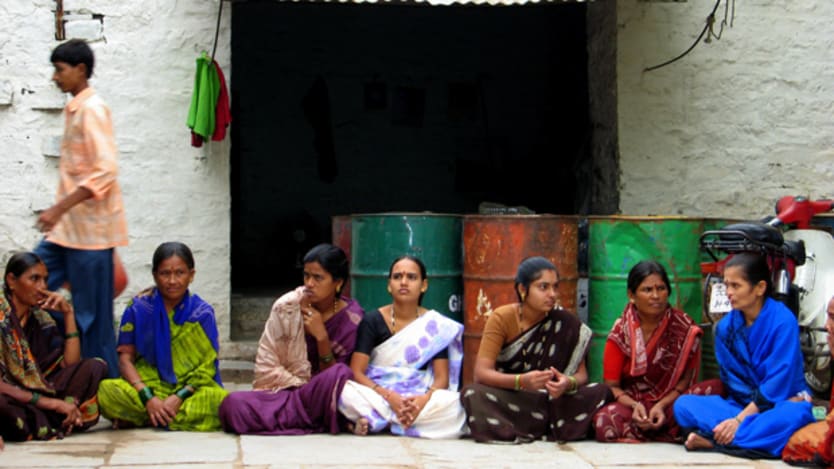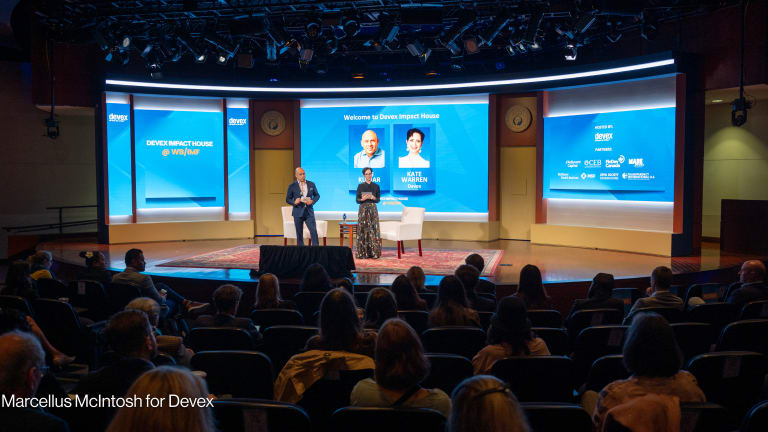
Is it possible for the microfinance industry to attract enough capital if it refocused its mission and objectives on the overriding goal of reducing poverty? To answer that question, we need to examine microfinance in the context of impact investment.
Microfinance today as impact investment
Microfinance has led the way for impact investing by charting the path to engaging private institutional and individual investors. Debt funds offer a range of returns, reflecting liquidity and currency, and the first full vintage of nine microfinance equity funds is now reaching the 10-year mark, with most likely to achieve positive annualized returns to investors ranging up to the mid-teens.
But the industry’s success in attracting and rewarding capital raises fundamental questions, such as:
● Given limited evidence of the industry’s impact on alleviating poverty, is it possible that the principal beneficiaries of microfinance have been the investors who have funded it? And if that is truly the case, should the industry’s further growth along the path it has chosen be discouraged?
● Is there a need for a thorough reassessment of the priorities and practices of the microfinance industry and its relationship to impact investors? Should the industry revisit its objectives and priorities so as to channel impact investment toward those products and services that demonstrably affect poverty and other social ills?
● Alternatively, even if expanding financial inclusion is considered sufficient social impact, can microfinance institutions expect to attract the flows of capital necessary to scale up from the current 300 million clients to a billion, 2 billion or more? And, to accomplish this, must the industry offer even higher returns to investors?
Like an aircraft carrier, a $70 billion industry won’t abruptly change course simply when questions are raised about its behavior — and it most certainly won’t be inclined to downsize when profits are easy to come by. As a practical matter, it would seem the only meaningful question is how high the financial return on investment needs to be to attract the investors the industry wishes to engage.
The high-profile initial public offerings of the 2000s remain contentious years after the fact. Compartamos, SKS Microfinance and other companies raised the profile of microfinance among conventional investors by showing that some founders and investors can reap returns that would be extraordinary in any sector. Some argue that it is only such occasional outsize returns that will drive the capital flows necessary for scale — to move microfinance from reaching a few hundred million to the billions that will represent true financial inclusion.
But should impact investors aim for the eye-popping returns of the microfinance IPOs? Certainly not in cases where such outsize returns impede or eliminate social impact.
While there’s no inevitable contradiction between impact and profitability, where investors receive above-market rates of return at the expense of those they purport to benefit, it’s inappropriate to brand them as impact investors. In the case of microfinance, their justification — “financial inclusion” that may only marginally benefit clients and sometimes lead to financial ruin — is simply a smokescreen for the industry’s drift toward profitability as the sole measure of success and away from demonstrable progress toward alleviating poverty.
What level of financial return to investors can be justified? As a practical matter, how much is enough?
In reality, we tend to sell investors short in terms of their requirements and motivations. There are plenty of upper- and middle-class consumers globally who will drive the extra miles and pay the premium price to patronize fair trade coffee roasters or buy premium, organic ice cream made with locally sourced milk free of growth hormones or accessorize and decorate with handicrafts made by Indian dalits or African women’s cooperatives.
But it is assumed that this impulse is entirely absent when it comes to the investment portfolios of these same consumers: Only competitive or superior returns will do for their investments. The common good becomes risk reduction, concern for the planet becomes brand equity. Unlike consumers’ motivation, the motivation for investors is reduced to a single value: maximizing financial returns.
See more related stories:
● What impact investors can learn from microfinance
● DevExplains: Impact investing
● Microfinance programs: West Africa's next task force?
● 4 tips to implementing effective and efficient microfinance programs
● Impact Investing 2.0: The evolving social finance landscape
● What's next for impact investing: Definitions, measurement and rising expectations
This defies both logic and recent data. The most recent JPMorgan-Global Impact Investing Network survey released this past May noted that of the 125 impact investors surveyed — which together reported impact investments exceeding $10 billion in 2013 — 54 percent expect “competitive market rate” financial returns. Twenty-three percent target below but near market returns and another 23 percent seek capital preservation. This would support the notion that many investors do not in fact require “superior” or competitive financial returns, but rather are evolving their concept of return as impact and common good investing is developed and refined.
It may even be inappropriate to classify as impact investors the 54 percent who seek competitive market rate returns. In microfinance, at least, their investments presumably go to MFIs that are single-mindedly pursuing profits, even at the expense of their clients. But the remaining 46 percent of investors leave ample room for consideration of social and environmental impact.
Some microfinance funds invest in MFIs that largely or exclusively target poor clients, those living on $2 a day or less. Not only are these clients often more difficult and costly to reach and constructively engage through business, they also pose a zero-sum quandary: An MFI’s profitability can be directly enhanced by increasing an interest rate or the price of a related service, but this profit comes directly out of that $2 per day.
If its borrowers nonetheless judge that interest rate to be affordable when compared to an economic benefit they receive as a result, which may be the case when loans are used to purchase income-enhancing products or services, then the company’s mission is well served, and outsiders have no room for complaint.
However, if the MFI’s borrowers are forced to accept outsize interest rates simply to earn greater profits for the investors, and borrowers’ economic benefits are few or nonexistent — as is the case when the preponderance of microloans are used for consumption — then the company’s social impact is questionable at best and probably negative. Naturally, any company must remain profitable, or it cannot sustain its operations. But outsize profits — requiring high-interest rates — may well jeopardize the viability of the businesses they fund.
However, as the JPMorgan impact investing survey reveals, many of us in the affluent world — nearly one-half, the survey says — and even in the middle and upper classes in emerging economies are prepared to mitigate our financial return requirements and place a priority on other values, settling for investments that only indirectly or far in the future will benefit us financially, if ever.
These are the people who drive the extra mile or pay the extra price or endure the extra inconvenience to align their consumption with their values. They are also prepared to sacrifice some basis points of return on their savings or retirement accounts, if the sacrifice translates into impact on poor people.
Implications for impact investors
Can extraordinary returns be extracted from the poor? The microfinance IPOs suggest yes. But, moral and ethical considerations aside, must investors take home such bountiful rewards in order to mobilize sufficient capital flows to go to scale? Proponents of the IPOs would argue yes, but data and logic suggest that as the impact space develops and priorities and values become clearer, the answer increasingly is no.
And high-impact investment opportunities do exist for the nearly 1 out of every 2 impact investors who are willing to accept the higher risk associated with serious anti-poverty ventures.
Still, far too many impact investors are confused about the meaning of profit in a social enterprise. It’s not enough to consider the financial return to investors. An impact investor must consider above all the essence of an impact investment: the mission that drives the enterprise — and the company’s success in fulfilling it.
For example, if an impact investment is intended to fight poverty, it must enable poor people to increase their income. In other words, profit must be seen as the source of financial benefit to the beneficiaries as well as to the investors.
Similarly, if a social enterprise has set out to reduce carbon emissions by marketing solar energy products or services, any prospective investor in the company — an impact investor — must evaluate its success in reducing carbon emissions as well as returning an acceptable rate of financial return. These requirements would seem to be self-evident, but, surprisingly, are left unexamined by many impact investors.
It seems that many of today’s self-styled impact investors tend to expect too much, and when their expectations aren’t met, they find that they never were clear about their priorities and their reasons for committing to an impact investment. It’s time for businesses that seek funds from impact investors to establish benchmarks and metrics for the social impact they seek to accomplish — and for impact investors to engage in some serious soul-searching if they find themselves looking only at how much profit they can extract.
Read the first article about what impact investors can learn from microfinance here.
Join the Devex community and access more in-depth analysis, breaking news and business advice — and a host of other services — on international development, humanitarian aid and global health.










